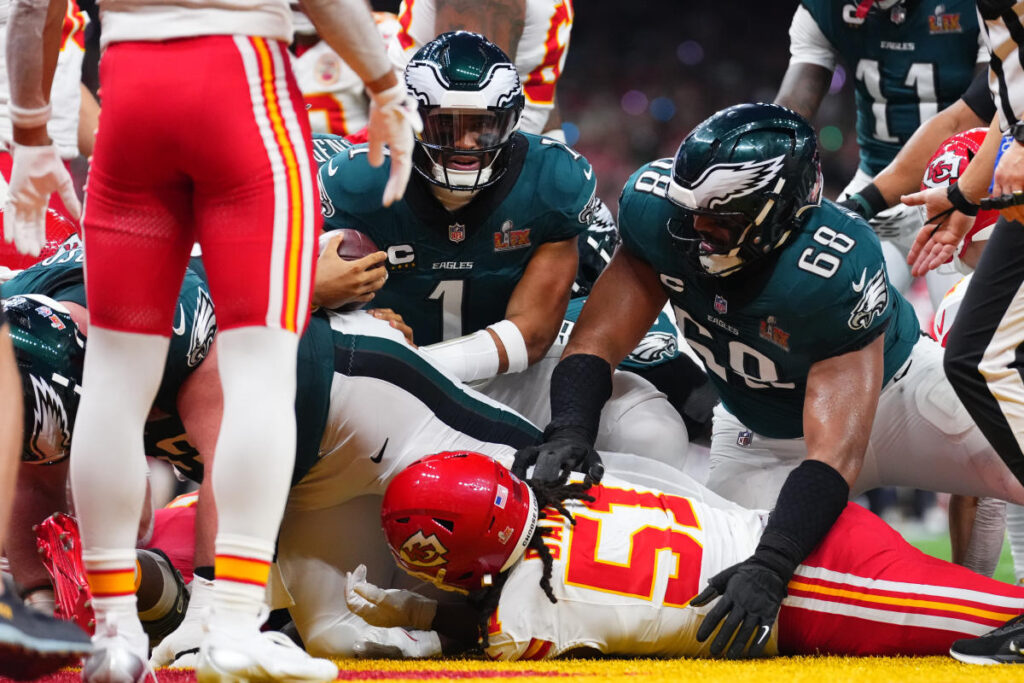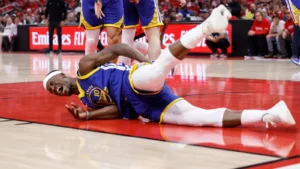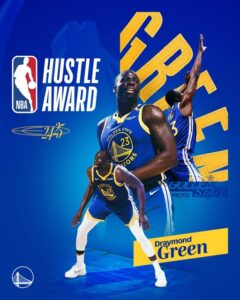
The NFL’s Polarizing “Tush Push”: A Battleground of Opinions and a Test of Football’s Soul
The “tush push,” a short-yardage quarterback sneak variation popularized with remarkable success by the Philadelphia Eagles, has become the unlikely centerpiece of a heated debate within the National Football League. This seemingly innocuous play, where teammates physically propel the quarterback forward from behind, has ignited passionate arguments that transcend typical rule adjustments, delving into the very essence of fair play, player safety, and the aesthetic integrity of the game. While reports indicate a significant level of support for a ban during recent league meetings, the discussions have been anything but harmonious, revealing a deep divide among coaches, general managers, and team owners.
At its core, the tush push, also known by some as the “Brotherly Shove,” is a strategic maneuver employed in crucial short-yardage situations, often on third or fourth down, or near the goal line. It involves the quarterback taking the snap and immediately being pushed forward by one or two teammates lined up directly behind him. This coordinated surge of force aims to guarantee the necessary yardage for a first down or a touchdown, and the Eagles, with their exceptional execution of the play, have demonstrated its almost unstoppable effectiveness.
However, this efficacy is precisely what fuels the controversy. Critics argue that the tush push circumvents the traditional challenges of short-yardage conversions, which typically involve intricate blocking schemes, quarterback agility, and defensive penetration. Instead, the tush push appears to rely more on sheer power and coordinated pushing, leading some to label it as a rugby-style scrum rather than a skillful football play. This has prompted concerns that the play provides an unfair advantage to teams with particularly strong and well-coordinated offensive lines and a quarterback willing to engage in this physical tactic.
The Green Bay Packers formally proposed a ban on the tush push, citing player safety and the potential for a negative impact on the pace of the game. While the league’s official data has not indicated a significant increase in injuries directly attributable to the tush push, the unique posture of the players involved – offensive linemen in a bent stance and defensive players potentially launching headfirst – raises hypothetical concerns among some medical professionals and coaches. Buffalo Bills head coach Sean McDermott, a member of the NFL’s competition committee, has been a vocal proponent of banning the play, emphasizing a proactive approach to player safety, even in the absence of conclusive injury data.
Adding another layer to the debate is the argument of consistency within the league’s rulebook. Dallas Cowboys co-owner Stephen Jones, also a member of the competition committee, has pointed out that pushing is prohibited in other aspects of the game, such as linebackers pushing defensive linemen on extra points. He argues that maintaining a consistent standard across all plays is essential for the integrity of the rules.
Conversely, proponents of the tush push, most notably the Philadelphia Eagles organization, vehemently defend its legality and its place in the game. Eagles head coach Nick Sirianni has emphasized the immense effort and practice his team has invested in perfecting the technique, arguing that it would be unfair to ban a play simply because other teams have not been as successful in executing it. Eagles General Manager Howie Roseman reportedly challenged the league to provide concrete injury data demonstrating the play’s inherent danger, questioning the subjective nature of some of the safety concerns raised.
Furthermore, some within the league view the attempt to ban the tush push as a targeted attack on the Eagles’ innovative strategy. They argue that penalizing a team for excelling at a particular play stifles creativity and strategic development within the game. The fact that several other teams have begun incorporating their versions of the tush push, albeit with less success than the Eagles, suggests that it is a legitimate tactic that teams are attempting to master.
The discussions surrounding the potential ban have reportedly been intense and “heated,” highlighting the strong opinions on both sides of the issue. While some coaches and executives have expressed aesthetic concerns, stating that the play “doesn’t look like football” or resembles a “rugby play,” others believe that the focus should remain on the effectiveness and legality of the play within the current rules.
The NFL’s Competition Committee, comprised of coaches and executives, appears to be divided on the matter, mirroring the broader split within the league. While some members advocate for the ban based on safety concerns and the perceived unfair advantage, others believe it is a legitimate football play that defenses should adapt to stop.
Ultimately, the decision to ban the tush push rests with the 32 team owners, and any rule change requires the support of at least 24 of them. The recent league meetings concluded without a vote on the issue, with the decision being tabled until the May meetings. This delay suggests that the debate is far from over and that the league is grappling with the complexities of potentially altering a play that has proven to be both highly effective and deeply divisive.
NFL Commissioner Roger Goodell indicated that the league would be revisiting rules from before 2004 that broadly prohibited pushing or pulling players, suggesting that any potential rule change regarding the tush push might be part of a wider effort to address pushing in various scenarios across the field. This broader approach could address consistency concerns and potential safety risks beyond just the quarterback sneak.
The outcome of this debate will have significant implications for the future of short-yardage offense in the NFL. A ban on the tush push would force teams to rely more on traditional methods of gaining tough yards, potentially increasing the drama and unpredictability of those critical situations. Conversely, allowing the play to continue would necessitate defenses finding innovative strategies to counter its effectiveness, further evolving the strategic landscape of the game.
As the league heads towards the May meetings, the “tush push” remains a focal point, embodying the ongoing tension between innovation, tradition, player safety, and competitive balance in the ever-evolving world of professional football. The final decision will not only determine the fate of this particular play but also provide a glimpse into the league’s philosophy on rule-making and the delicate balance between allowing offensive creativity and preserving the fundamental nature of the game.





